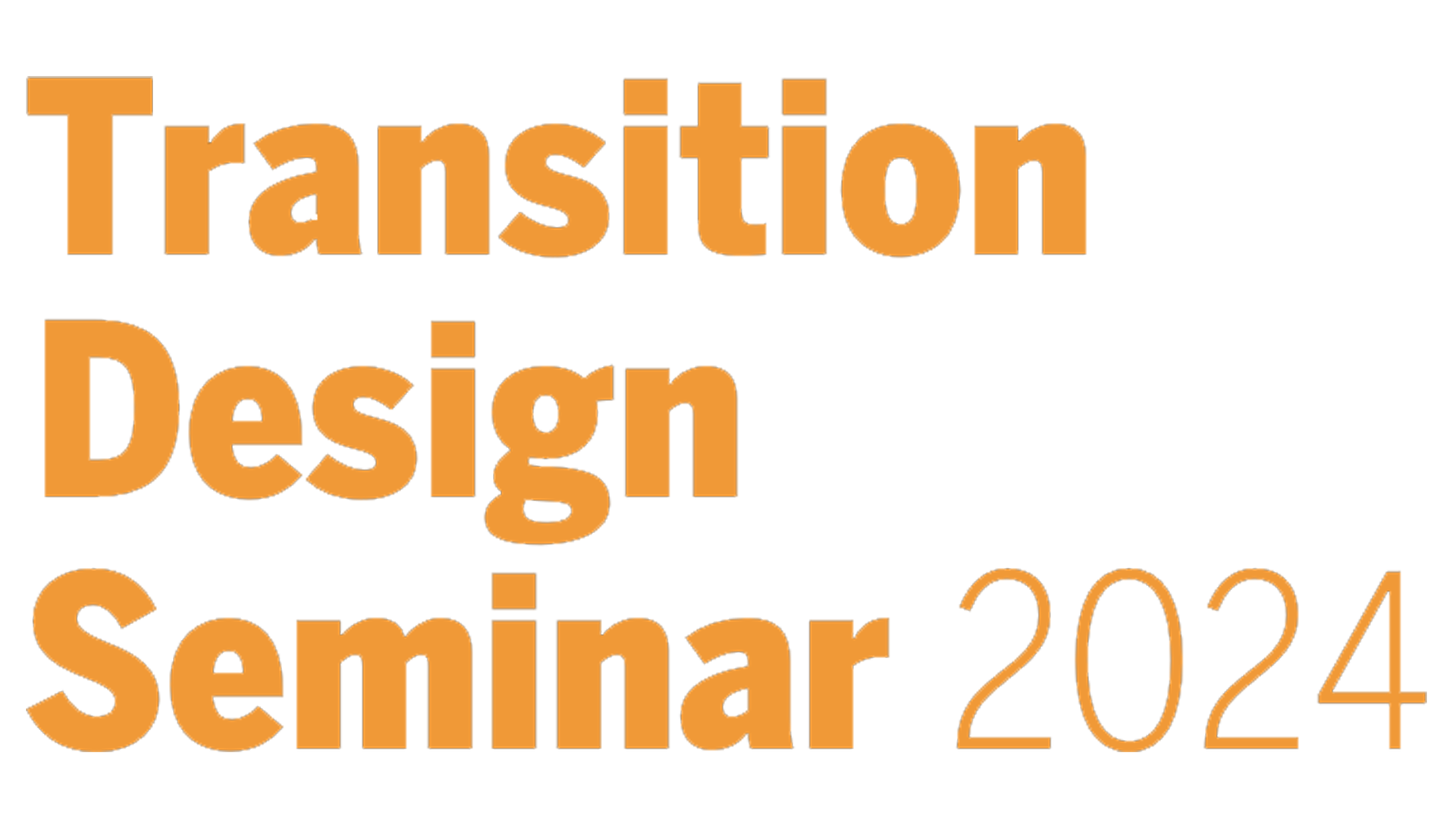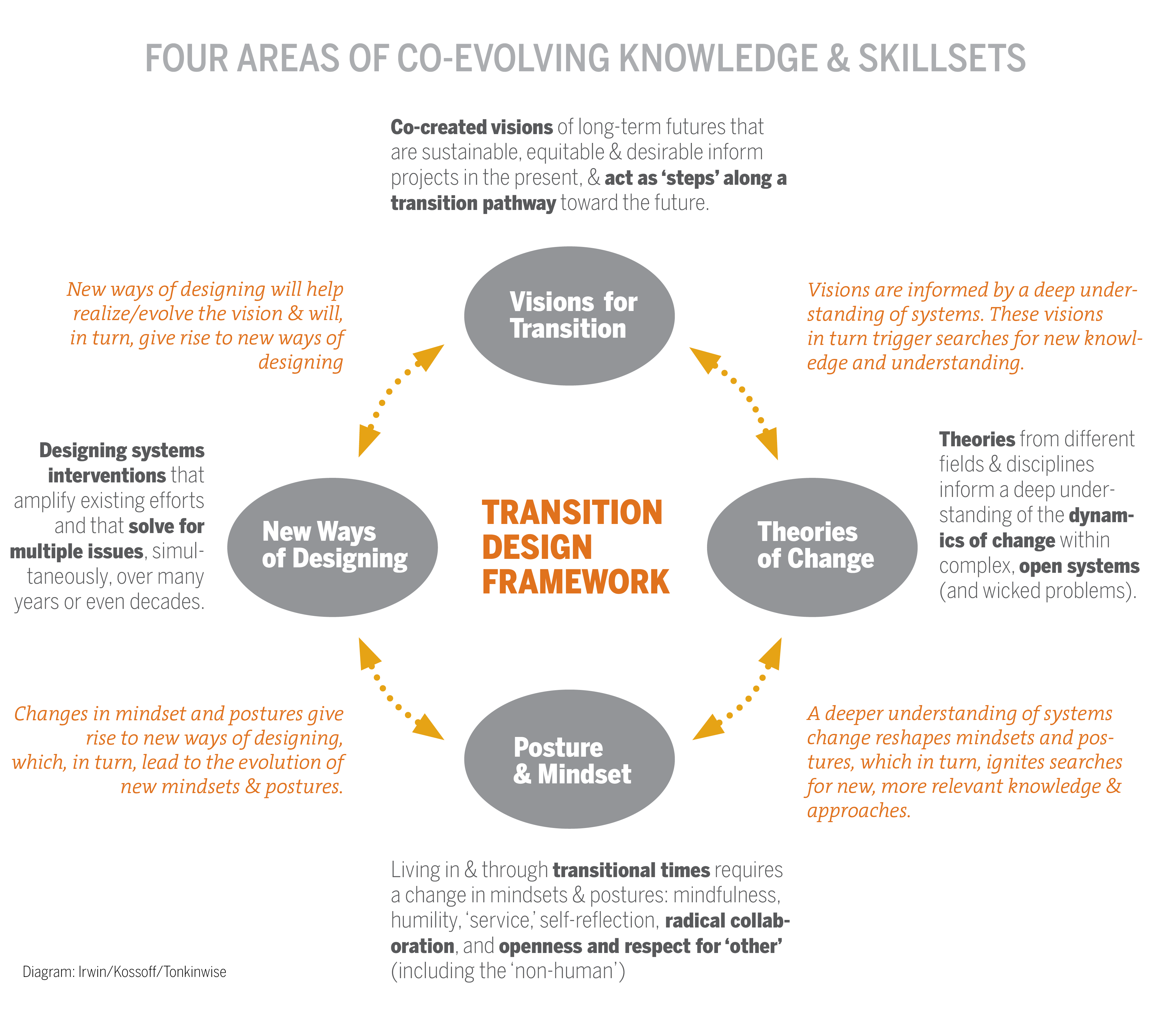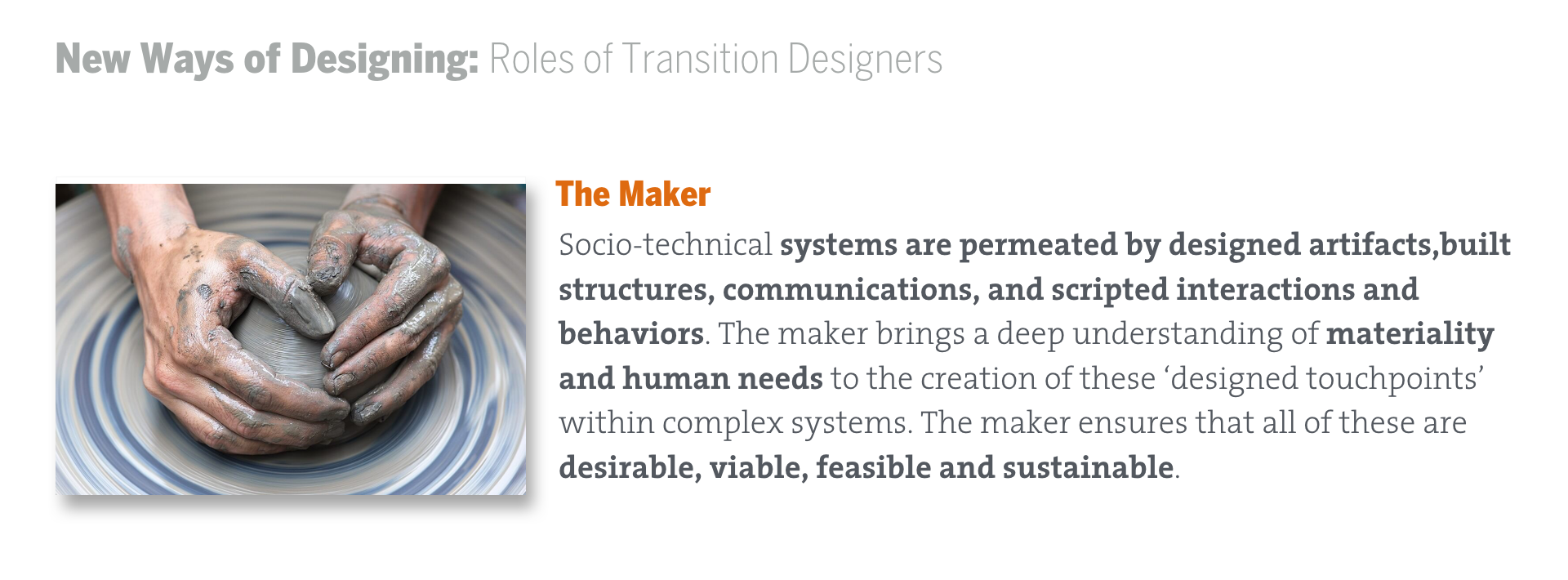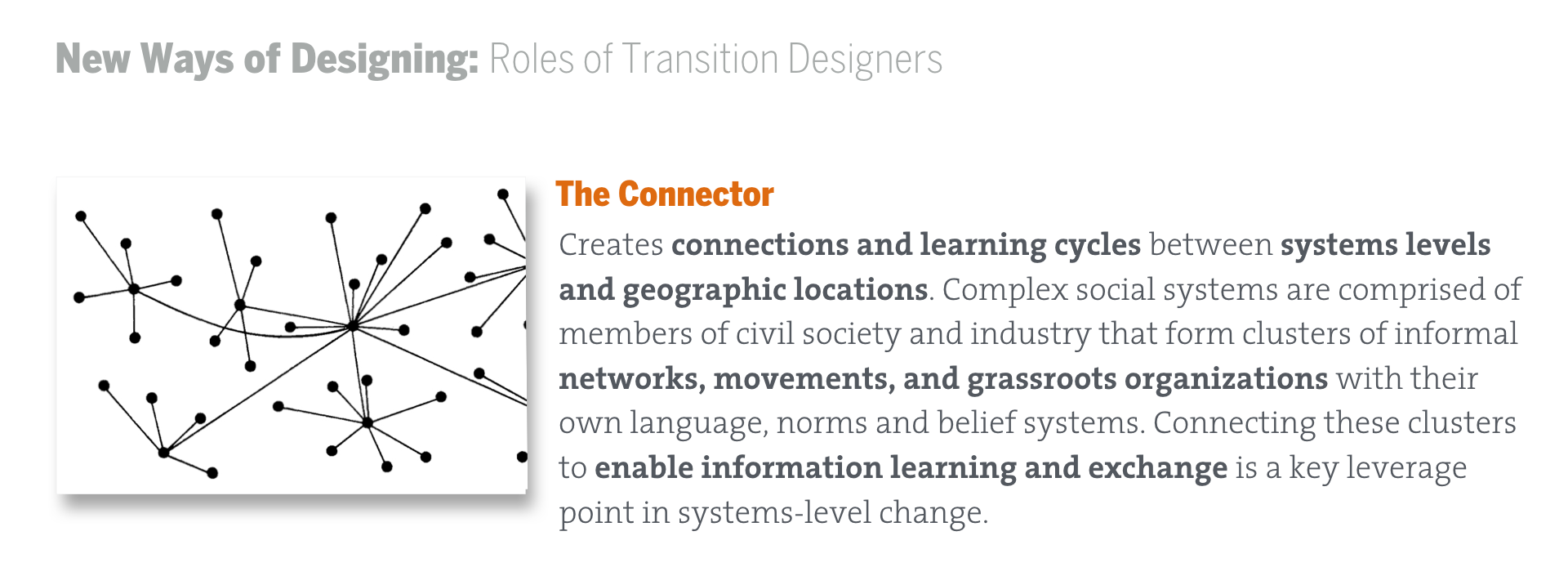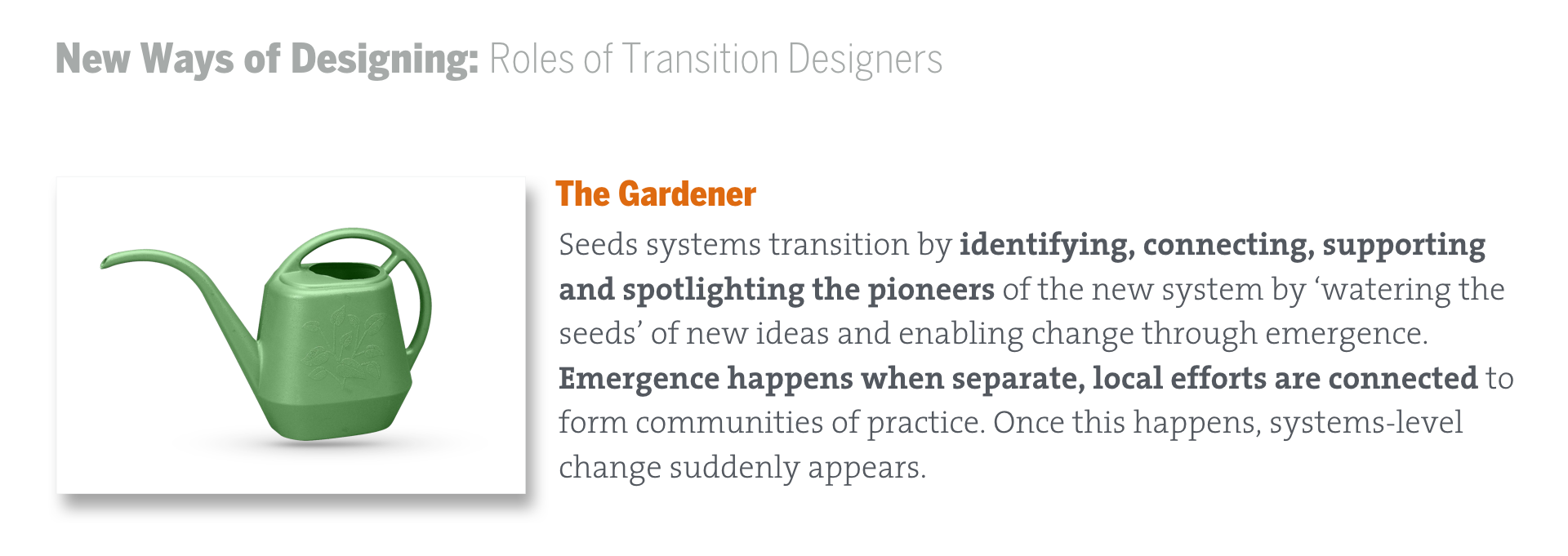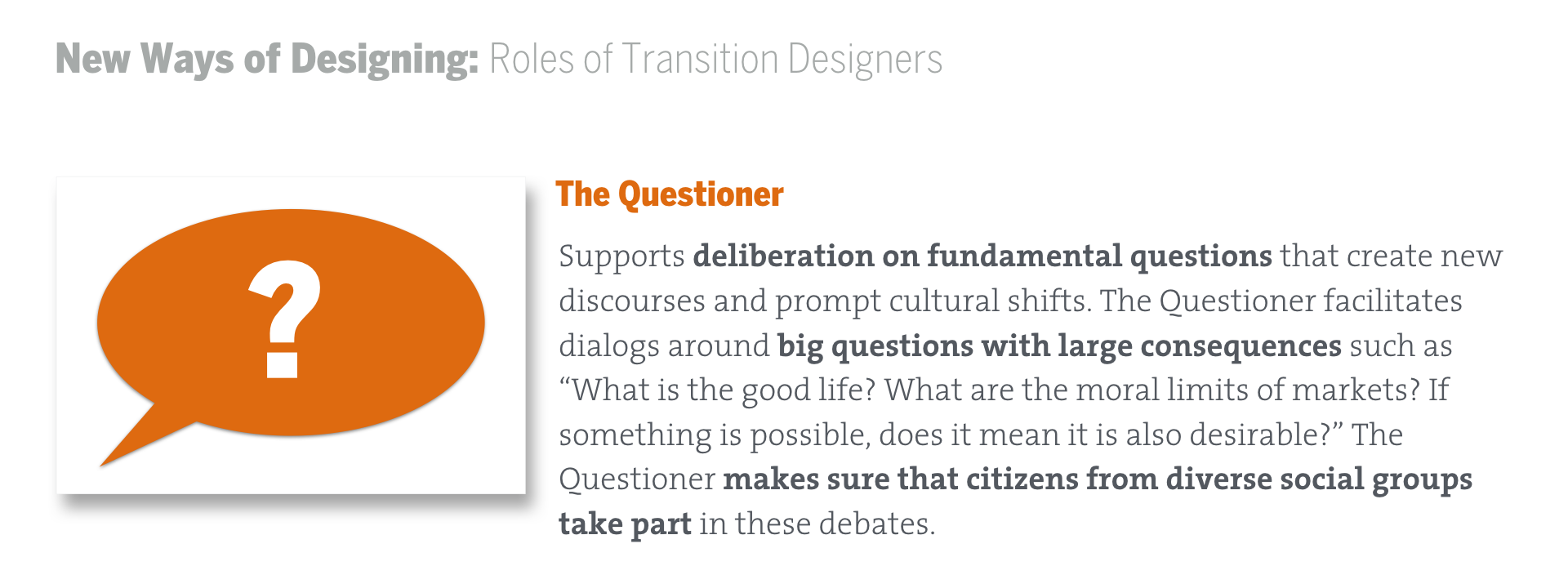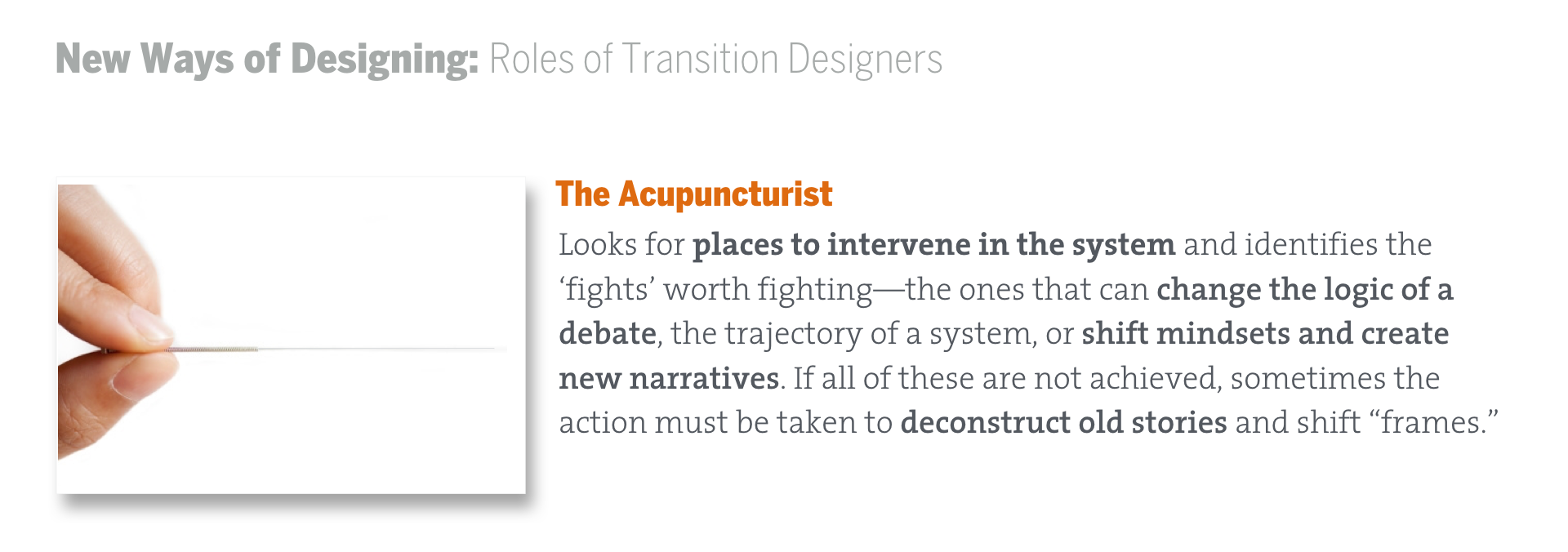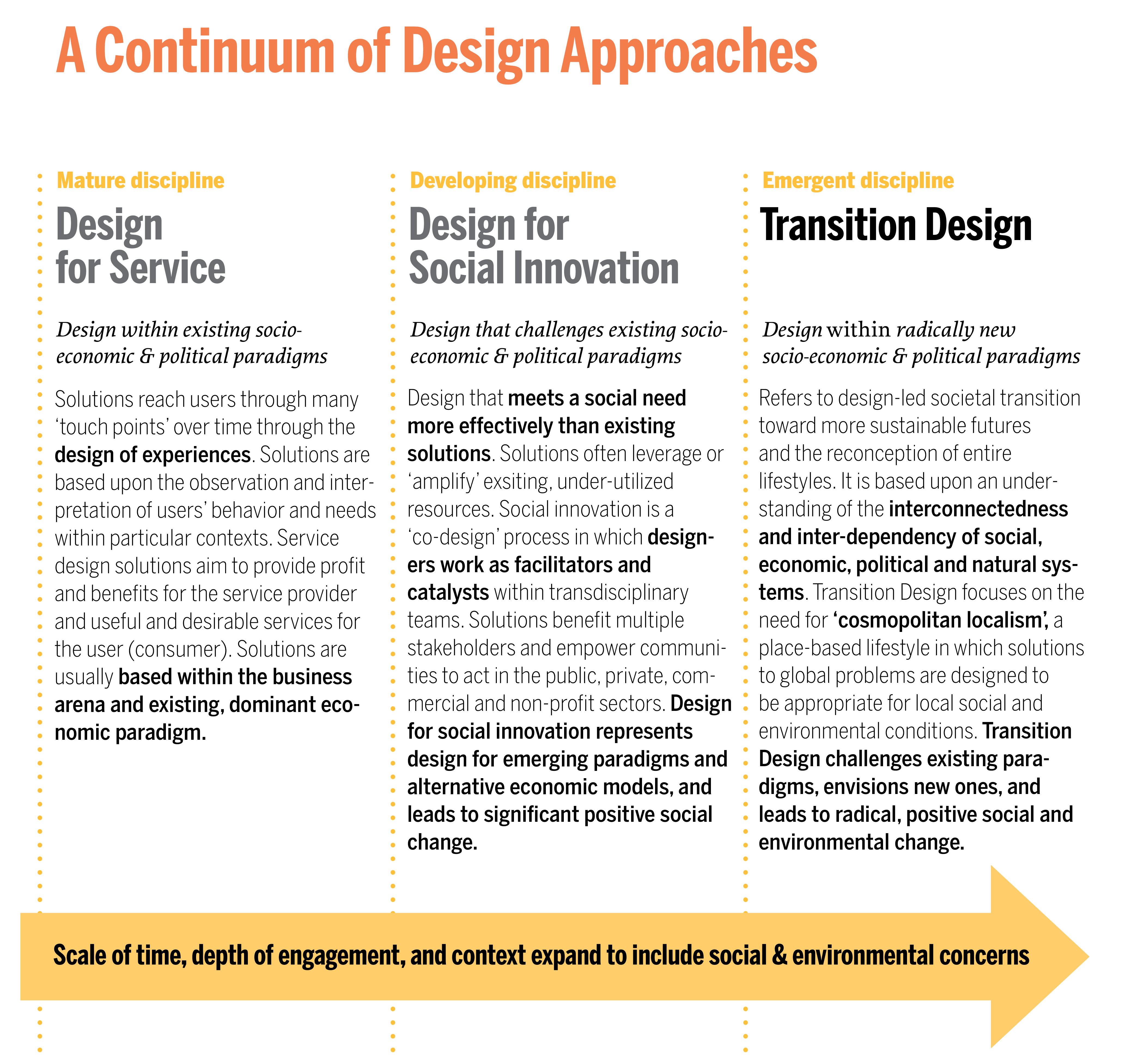Living in and through transitional times calls for self-reflection and ‘new ways of knowing’ and ‘being’ in the world. Fundamental change is often the result of a shift in mindset or worldview that in turn leads to new modes of interaction with others. Individual and collective mindsets represent the beliefs, values, assumptions and expectations formed by our individual and collective experiences, cultural norms, religious and spiritual beliefs and the socio-economic and political paradigms to which we subscribe and are embedded within. Our mindsets and postures often go unnoticed and unexamined/critiqued, but they profoundly influence: 1) whether we ‘see’ a problem; 2) what kind of contexts we frame it within (do we include social/environmental concerns); 3) how we attempt to solve it.
Transition Design that in order to address wicked problems and work on behalf of ‘transition’, we must examine our own value system and how it influences our work. It also argues that sustainable solutions are best conceived within a more holistic worldview that informs more collaborative postures of interaction. Transition Design examines the phenomena of worldview, posture and mindset and their connection to wicked problems. It also proposes shifting our mindsets, values and postures as part of an intentional process of self-reflection and positive change.
There is an emerging body of transdisciplinary knowledge that examines the phenomenon of mindset or worldview and its role in wicked problems and their solution. In their book The Systems View of Life: A Unifying Vision, Capra and Luisi propose “…these problems must be seen as just different facets of one single crisis, which is largely a crisis of perception. It derives from the fact that most people in our modern society, and especially our large social institutions, subscribe to the concepts of an outdated worldview, a perception of reality inadequate for dealing with our overpopulated, globally interconnected world.” Du Plessis argues that a “practical understanding of the process of individual change is fundamental to work in social system change. An individual can change their beliefs by engaging in a process of personal transformation and that process can be learned, and incorporated into design practice. If we are going to educate designers who will facilitate social system change, we also need to teach them to work with the interior, invisible dimension of human experience.”
Transition Design also argues that working on wicked problems (and on behalf of stakeholders connected to and affected by them) calls for a shift in mindset and posture. Instead of coming to the work leading with one’s expertise and knowledge, one instead approaches it in the attitude of ‘service’, as written about by leadership scholar Robert Greenleaf who proposed the concept of ‘servant leadership’. Wicked problems cannot be solved by any single individual, group or discipline—their resolution requires radical collaboration over dozens of years (or dozens of decades) to resolve, so any expertise we bring to that collaboration will be extremely limited; any of us can only know ‘a lot’ about very little.
Educator and environmentalist David Orr has said “The plain fact is that the planet does not need more successful people. But it does desperately need more peacemakers, healers, restorers, storytellers, and lovers of every kind. It needs people who live well in their places. It needs people of moral courage willing to join the fight to make the world habitable and humane. And these qualities have little to do with success as we have defined it.”
